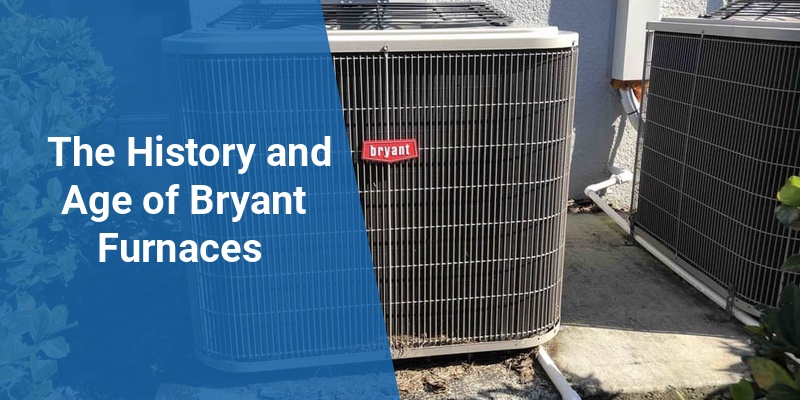The Bryant brand has been synonymous with home heating innovations for over a century. Understanding the age of a Bryant furnace is crucial for homeowners and technicians to assess efficiency, plan maintenance, or decide on replacement. This guide delves into how Bryant furnaces evolved, methods to determine their age, and why knowing the furnace age can impact heating performance and safety.
| Aspect | Details |
|---|---|
| Brand Origin | Founded in 1904, known for durability and innovation |
| Furnace Age Determination | Check model/serial number on furnace data plate |
| Typical Lifespan | 15 to 25 years depending on maintenance and model |
| Common Materials | Steel heat exchangers, galvanized steel, aluminum parts |
| Replacement Indicators | Rising repair costs, inconsistent heating, outdated technology |
History and Evolution of Bryant Furnaces
Bryant Heating & Cooling Systems has been a major player in the HVAC industry since its founding in 1904 in Wisconsin. Originally focused on manufacturing robust home heating units, Bryant adapted quickly to innovations in furnace technology. Early furnaces from Bryant were predominantly coal or oil-fueled, with a gradual shift to gas furnaces as residential natural gas infrastructure expanded.
The company’s emphasis on longevity and efficiency has led to several advancements, including the introduction of more durable heat exchangers, improved airflow designs, and the adoption of electronic controls in later models. The diverse range of furnace models across decades means age determination depends heavily on model-specific data for accuracy.
How to Determine the Age of a Bryant Furnace
Locating the precise manufacturing date of a Bryant furnace starts with inspecting the data plate or label, which is typically found on the furnace cabinet. This tag displays the model number and serial number, which contain encoded manufacturing information.
Reading the Serial Number
Bryant serial numbers generally follow a pattern where the first two digits represent the year of manufacture. For example, a serial number starting with “13” likely indicates the furnace was made in 2013. However, this can vary depending on the model and era, so consulting Bryant’s official resources or HVAC professionals ensures accurate interpretation.
Using Model Number and Manufacturer Codes
The model number can also hint at the furnace’s generation. Older models will differ significantly in design and specifications compared to modern high-efficiency units. Bryant’s digital archives and customer support can verify exact production years through model and serial numbers.
Typical Lifespan and Performance of Bryant Furnaces
On average, Bryant furnaces operate effectively for 15 to 25 years, depending on installation quality, maintenance frequency, and operating conditions. Proper seasonal inspections and timely repair prolong the furnace’s working life.
Call 888-906-9139 for Free Local HVAC Quotes – No Obligation, Just Savings!
| Factor Affecting Lifespan | Impact |
|---|---|
| Regular Maintenance | Extends furnace efficiency and longevity |
| Fuel Type | Gas furnaces typically last longer than oil or electric models |
| Usage Intensity | Heavy seasonal use leads to faster wear |
| Environment | Corrosive or dusty environments decrease furnace lifespan |
Modern Bryant models emphasize energy efficiency, often qualifying for ENERGY STAR certifications, which can yield savings and improved indoor comfort compared to older units.
Signs It May Be Time to Replace Your Bryant Furnace
While many Bryant furnaces are reliable, aging equipment can pose safety risks and efficiency issues. Homeowners should watch for:
- Increasing Repair Costs: Frequent breakdowns and expensive repairs reduce cost-effectiveness.
- Uneven or Insufficient Heating: Old furnaces can fail to heat the home uniformly.
- Strange Noises or Odors: Signs of mechanical wear or gas leaks.
- Yellow Burner Flame: Indicates incomplete combustion and potential safety risks.
- Higher Energy Bills: Decreased efficiency leads to higher operating costs.
Consulting an HVAC professional for regular diagnostics can help decide whether repair or replacement is the best option.
Maintenance Tips to Extend the Life of Bryant Furnaces
Maximizing the lifespan and performance of a Bryant furnace requires consistent care:
- Annual Professional Inspections: Essential for safety and efficiency checks.
- Filter Replacement: Replace filters every 1-3 months to prevent airflow restrictions.
- Clean Vents and Registers: Ensure unobstructed airflow throughout the home.
- Check Thermostat Functionality: Replace or recalibrate to maintain temperature accuracy.
- Clear Debris from External Units: Prevents damage and maintains proper ventilation.
Summary Table: Bryant Furnace Age Determination and Maintenance at a Glance
| Step | Action | Details |
|---|---|---|
| Locate Data Plate | Identify serial and model number on furnace | Usually inside furnace cabinet door or side panel |
| Decode Serial Number | First two digits typically indicate the year of manufacture | Check Bryant resources for model-specific formats |
| Assess Furnace Age | Compare to typical lifespan of 15-25 years | Consider efficiency and usage history |
| Schedule Maintenance | Annual professional checkups | Replace filters and clean vents regularly |
| Monitor Performance | Look for signs of wear and inefficiency | Plan for repair or replacement accordingly |
